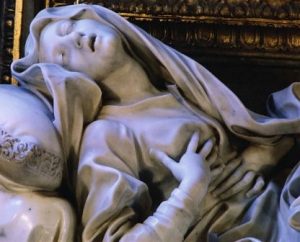 Appel à publication : « Emotions, Art, and Religion in Europe, Africa, and the Americas, c. 1400–1800 » (The Renaissance Society of America)
Appel à publication : « Emotions, Art, and Religion in Europe, Africa, and the Americas, c. 1400–1800 » (The Renaissance Society of America)
The “emotional turn” has prompted numerous studies on the history of emotions in the medieval and early modern periods. Many of these studies have been oriented towards texts rather than images, although recently visual culture, especially among medievalists, has played a more prominent role in these investigations. Nevertheless, there is still much to be explored about the role of visual and material culture in the history of emotions in the late medieval and early modern eras. There is also the need for further examination of the emotions within a globalized framework. While there are many ways in which to probe the emotional worlds of the peoples living during this time on either side of the Atlantic, this anthology will offer a more narrow lens through which to examine this topic.
Our anthology focuses on religious art (or art informed by religious ideas) made in Europe, Africa, and the Americas between c. 1400 and 1800. These centuries witnessed enormous changes–from burgeoning globalization, expanding world trade networks, and colonization to religious conflicts, technological innovation, and political revolutions–yet visual culture remained a consistent force shaping people’s lives. We want to probe how art, architecture, and performance stimulated, molded, and encoded emotions. To further complicate the constructedness of emotions, this anthology centers on visual culture to explore how emotions differ in their local and global “contexts” amidst the many shifts occurring.
Questions considered by authors may include: As something so intangible and personal, are emotional experiences able to be represented? Can visual culture adequately capture an emotional experience? How has visual culture been utilized to address religious or spiritual emotional needs or goals? In what ways do visual images, architectural spaces, or performances provoke emotional responses or aid in creating or maintaining emotional communities? How do emotional communities transform over time, and what role did visual culture play in this transformation? In what ways are emotions and visual culture tied to identity, gender, race/ethnicity, or politics? Without textual sources (such as archival or literary texts), how are we able to understand imagery’s role in the history of emotions? How do we reconcile global and local emotional lexicons?
We invite papers (approximately 8,000–10,000 words) for the upcoming anthology, Emotions, Art, and Religion in Europe, Africa, and the Americas, c. 1400–1800, which will be the first study of art and emotions within the increasingly globalized world. We especially encourage papers that explore emotions and art through a transatlantic lens.
Please send your submission to the editors, Lauren Kilroy-Ewbank (lauren.kilroy@pepperdine.edu) and Heather Graham (Heather.Graham@csulb.edu) by no later than March 30, 2018. Submissions should include a cover letter, C.V., and an abstract about 500–750 words in length.

Leave a Reply
You must be logged in to post a comment.